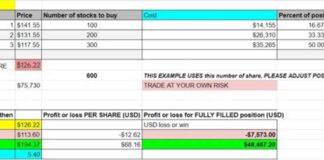Nvidia’s Earnings Report: Navigating the Ups and Downs of a Tech Giant
Nvidia, under the leadership of CEO Jensen Huang, continues to make waves in the tech industry with its latest earnings report. The company reported its fourth-straight quarter of triple-digit revenue growth, exceeding expectations on both the top and bottom lines. Additionally, Nvidia issued a forecast that surpassed Wall Street’s projections, further solidifying its position as a market leader in the world of artificial intelligence.
Despite these impressive numbers, the stock experienced a 7% drop in extended trading, highlighting the challenges of being priced for perfection in today’s volatile market. This fluctuation is a familiar pattern for Nvidia, which has seen its market cap skyrocket to $3 trillion, outperforming nearly every other public company except for Apple. The company’s valuation has increased almost nine-fold since the end of 2022, showcasing the immense growth potential of the AI industry.
Analysts were particularly interested in Nvidia’s revenue growth, which soared by 122% annually to over $30 billion. The company also projected a further 80% increase in sales for the current period, reaching approximately $32.5 billion. While these numbers were impressive, some investors had higher expectations, with “buyside whispers” suggesting figures closer to $33 billion to $34 billion. Meeting these lofty projections would require Nvidia to exceed analyst estimates significantly in its guidance.
Stacy Rasgon, an analyst at Bernstein, emphasized the continued strong demand for Nvidia’s graphics processing units (GPUs), which serve as the backbone for developing and running AI models. Despite concerns about potential delays in the release of the company’s latest technology, Blackwell, Nvidia reassured investors that supply and availability have improved. CFO Colette Kress noted that demand for Blackwell platforms exceeds supply, a trend expected to continue into the next year.
Another point of interest for investors was Nvidia’s gross margin, which experienced a slight decline to 75.1% from 78.4% in the previous period. While this figure was still significantly higher than two years ago, some analysts were expecting a margin closer to 76.4% for the full year. Nvidia projected its gross margin to remain in the “mid-70% range” for the year, indicating a potential shift in profitability compared to previous expectations.
During the earnings call, Nvidia executives addressed questions about customer profitability and the company’s technological advancements. CEO Jensen Huang highlighted the transformative impact of Nvidia’s technology on traditional processors, emphasizing the growing importance of generative AI and its applications across various industries. Huang also discussed the increasing computing power required for next-generation AI models, a trend echoed by industry experts like former Google CEO Eric Schmidt.
Nvidia’s focus on cutting-edge AI technologies positions the company as a key player in driving innovation and pushing the boundaries of what is possible in the tech sector. By investing in Nvidia infrastructure, customers are seeing immediate returns on their investments, underscoring the value of the company’s products and services. As AI continues to evolve and shape industries, Nvidia remains at the forefront of delivering groundbreaking solutions that drive growth and efficiency for businesses worldwide.
Subheadings:
The Impact of Nvidia’s Earnings Report on Market Dynamics
Analyzing Nvidia’s Revenue Growth and Forecast Projections
Nvidia’s Strategic Positioning in the AI Landscape
In Conclusion, Nvidia’s latest earnings report reflects the company’s continued success and growth trajectory in the competitive tech industry. Despite facing challenges and fluctuations in the market, Nvidia’s commitment to innovation and excellence positions it as a leader in driving the future of artificial intelligence and technology. Investors and stakeholders can look forward to continued advancements and opportunities as Nvidia navigates the complexities of a rapidly evolving industry landscape.

















